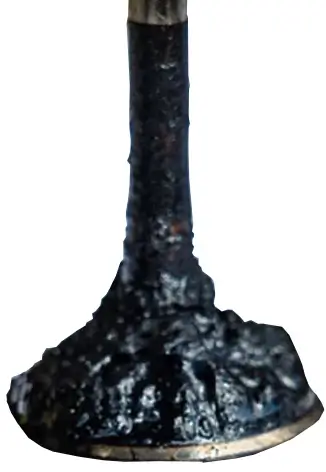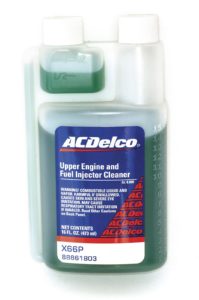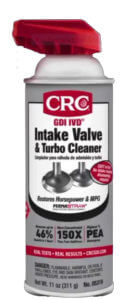Carbon buildup on intake valves and induction cleaning
Carbon buildup on intake valves and induction cleaning service
Do you have carbon buildup and do you need an induction cleaning service
Late model engines have gasoline direction injection where the fuel is injected directly  into the cylinder. That’s a huge change from port injection where the fuel and its detergent additives constantly washed the backside of intake valves. Because the valves are no longer being washed with fuel and detergent, some vehicles are accumulating large deposits of carbon buildup on the intake valves. In fact, lack of fuel contact is the #1 cause of carbon buildup. Yet some vehicles are more prone to it than others.
into the cylinder. That’s a huge change from port injection where the fuel and its detergent additives constantly washed the backside of intake valves. Because the valves are no longer being washed with fuel and detergent, some vehicles are accumulating large deposits of carbon buildup on the intake valves. In fact, lack of fuel contact is the #1 cause of carbon buildup. Yet some vehicles are more prone to it than others.
To combat the buildup, many shops are proactively selling air induction cleaning services to everybody, whether they need it or not. Is your vehicle a candidate for carbon buildup on intake valves and should you buy induction cleaning services?
Two additional reasons carbon buildup on intake valves up has become a new problem
• Lean burn misfires — To maximize fuel economy, carmakers command much leaner air/fuel mixtures that teeters on the edge between maximum fuel efficiency and misfire. The lean mixtures burn hotter, wearing out spark plugs faster than most owners think. A wider spark plug gap means a shorter and cooler spark, and on a lean burn engine, that causes misfires.
When the cylinder misfires, the intake and exhaust valves come in contact with unburned fuel. The exhaust valve is hot enough to burn off the fuel, but the intake valve isn’t and it accumulates deposits that stick to the neck of the valve.
• Variable valve timing and valve overlap – Most late model engines employ variable valve timing mechanisms to shorten the valve overlap time, but they can’t eliminate it completely. During valve overlap, a small amount of combustion byproducts and exhaust gas stays in the chamber and that comes in contact with the backside of the intake valve, causing deposits.
Carbon on intake valves is most common on European vehicles
BMW, Audi and VW vehicles tend to have the worst and most frequent episodes of misfires caused by carbon buildup. Engines from GM and Ford hardly have carbon buildup complaints.
It has forced carmakers to change direct injection operation
To combat buildup, engineers have altered GDI spray patterns, spray timing and, in some cases, even intake valve design. Car makers have also made significant changes to the positive crankcase ventilation (PCV) system to prevent oil and fuel vapors from depositing in the intake manifold and the intake valves. Plus, they’ve had to change piston ring tension to reduce blow-by in the first place (retreating on their campaign to reduce ring tension to improve fuel economy).
GM reduces carbon buildup and the need for air induction cleaning services
GM has addressed the buildup problem by altering fuel injection timing and valve opening timing. If too much fuel is injected during the intake phase when the intake valve is open, the high cylinder temperature can cause the fuel to contact the intake valve and form soot. Once soot accumulation starts, it builds rapidly. So GM changed valve and GDI injector timing to reduce the contact time and prevent soot formation.
The industry reports that GM and Ford engines are among the least affected by carbon buildup problems in their GDI engines.
On other brands, the amount and severity of buildup is directly related to the quality of the fuel, driving habits and engine operating temperatures. GDI engines that encounter lots of short trips and cold starts tend to have more problems with carbon buildup.
What are the symptoms of carbon buildup?
• Lower power due to decreased airflow past the buildup on the intake valves.
• Lower MPG due to lower airflow efficiency
• Poor acceleration power.
How to clean your intake valves yourself.
Once the buildup has reached the point where it affects engine performance, a fuel induction service or decarbonization service is required. In severe cases, the cylinder head must be removed and manual cleaning is required.
Fuel induction service involves the  introduction of a solvent vapor through the air intake system with the engine running. The solvent attacks the buildup on the back face of the intake valves.
introduction of a solvent vapor through the air intake system with the engine running. The solvent attacks the buildup on the back face of the intake valves.
Two cleaners can be used and both can be applied by a DIYer. One cleaner is GM’s Top Engine cleaner (ACDelco Upper Engine & Fuel Injector Cleaner 88861803 –CLEANER). The cleaner is available as a liquid or spray can. The other is CRC’s Intake Valve and Turbo Cleaner.

DIYers can perform this service on their own. In conventional parlance, DIYers often refer to this procedure as Seafoaming their engine. The typical Seafoam procedure involves pouring Seafoam directly into the vacuum line to the vacuum brake booster. Because Seafoam contains combustible solvents, that is NO LONGER recommended by car makers because it allows unmetered air into the engine.
The instant you disconnect a vacuum line, you introduce unmetered air into the engine. The PCM/ECM immediately responds to the unmetered air by boosting fuel trim, resulting is excessive dumping of unburned fuel and Seafoam combustible solvents directly into the catalytic converter. That excess fuel can result in cat converter temperatures in excess of 2,000°F, causing catastrophic converter meltdown failure.
The GM and CRC cleaners should be injected into the air intake duct past the MAF sensor in short bursts with lag time between bursts with the engine running at 2,000 RPM. After you empty the container, turn off the engine at let it heat soak for at least one hour. Heat soaking is VERY important to the success of the cleaning. After an hour, drive the vehicle at highway speeds for at least ten minutes and drive the vehicle every day for approximately six more days.

Notice how the straw is spraying the cleaner past the MAF sensor sensing element. This does two things: it prevents the spray from getting on the MAF sensor and giving the computer the wrong mass airflow readings, and 2) it prevents the computer from getting unmetered air.
Should you agree to routine air Induction Service?
Most car makers do NOT recommend routine fuel induction service. In fact, their factory service bulletins warn dealers not to perform these cleaning services as a routine “recommended service.” In the car repair industry, these “dealer recommended” services are referring to was “wallet flushing services,” since they benefit only the dealer.
Fuel induction cleaning should be performed only on certain engines where buildup is diagnosed as the cause of engine performance issues. Then fuel induction cleaning is justified to remove the carbon buildup and restore the engine to original performance.
See this post for more information on fuel induction cleaning.
See this post for more information on fuel injector cleaning
©, 2018 Rick Muscoplat
Posted on by Rick Muscoplat